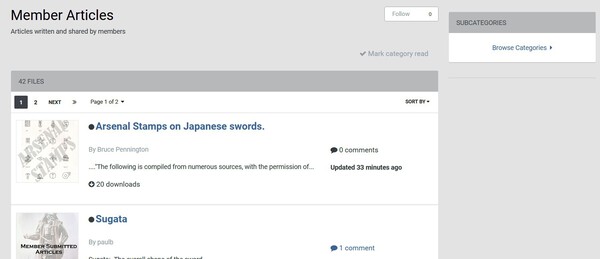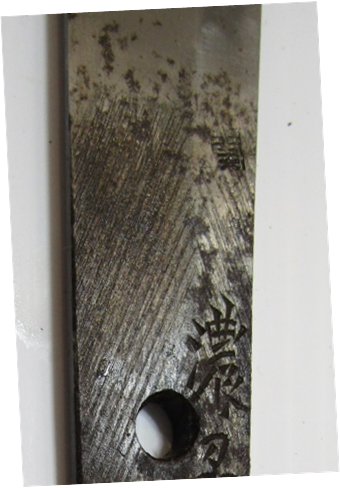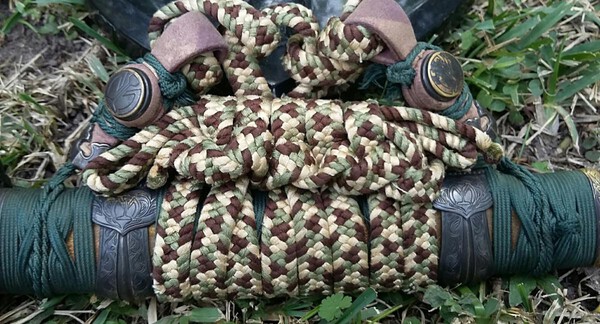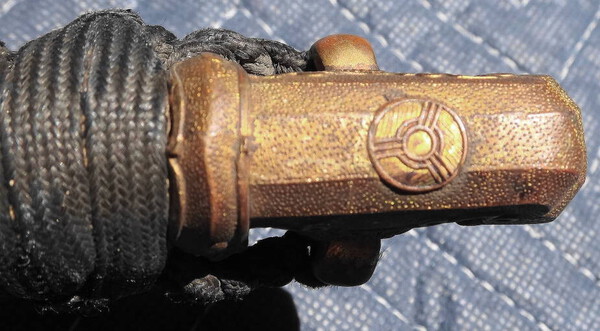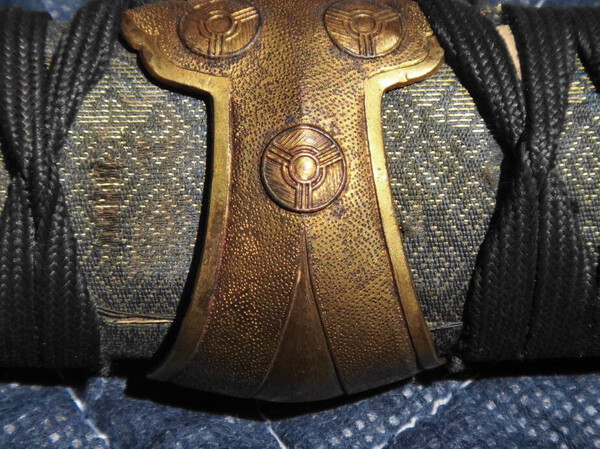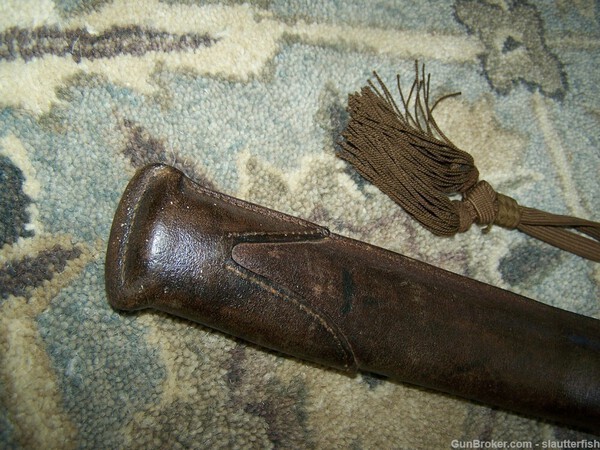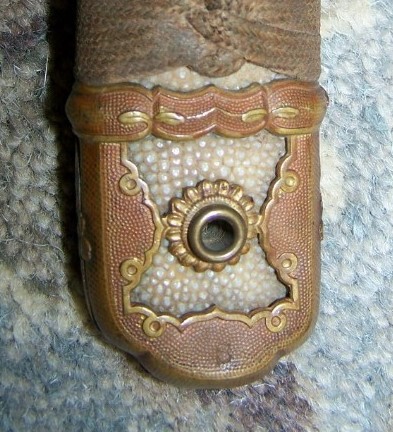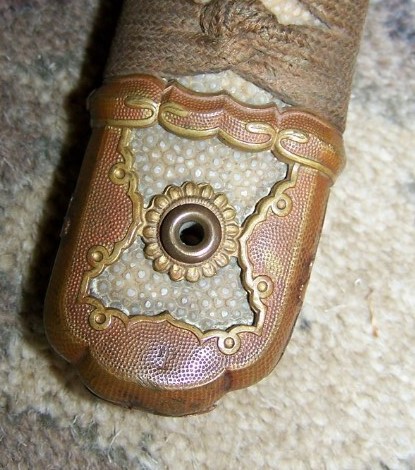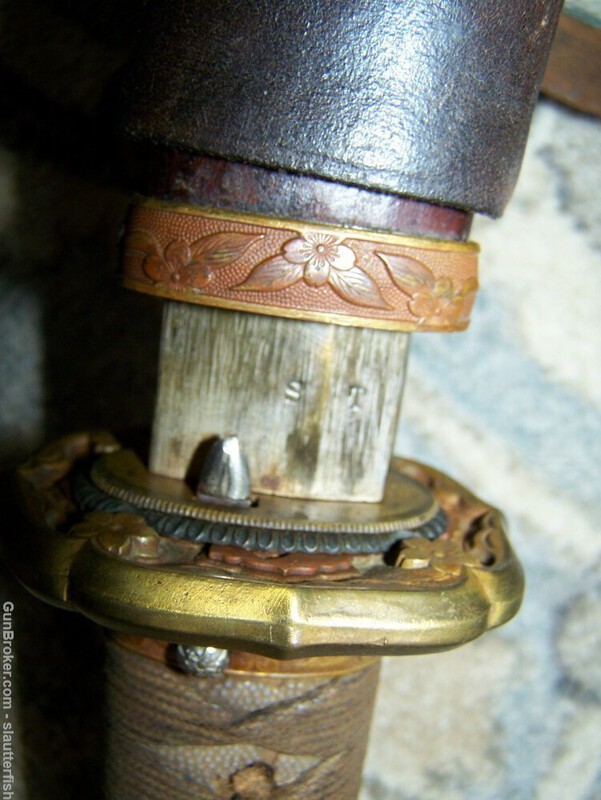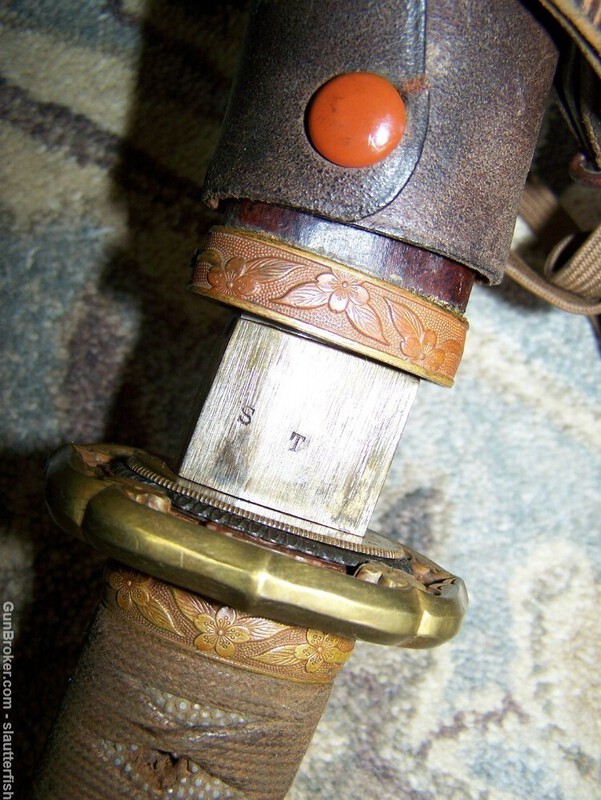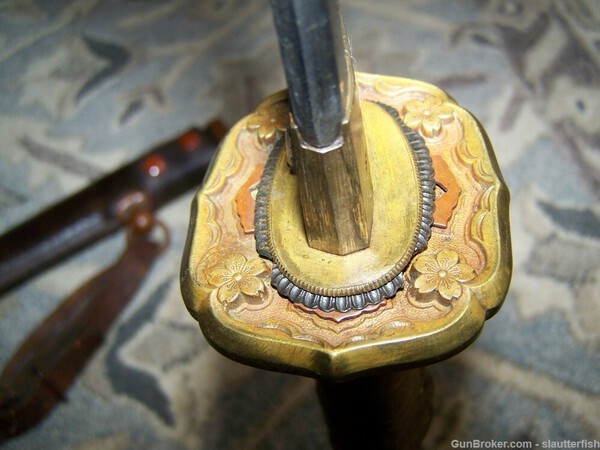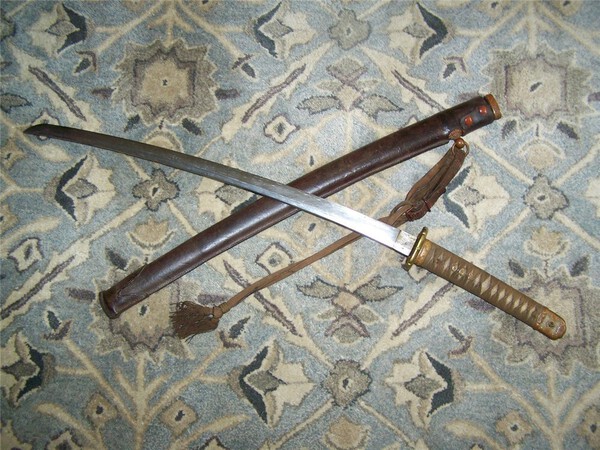-
Posts
13,072 -
Joined
-
Last visited
-
Days Won
157
Content Type
Profiles
Forums
Events
Store
Downloads
Gallery
Everything posted by Bruce Pennington
-
That was tough! I hate their writing, sometimes. It's like trying to read Doctor's prescriptions. Couldn't get all the date, 2 kanji didn't make sense.
-
I believe I've done some business with you too, welcome! Your very presence is a sign of your honesty. Shady dealers would never join the forum using their sales name (I can think of a couple or 3). So!! Are you a collector too? If so, start bringing out the eye-candy!
-
John, Here is where the Gendaito/Nihonto jargon gets me confused sometimes - are you saying the blade is "traditionally made"? and that the large Seki stamps aren't part of the required stamping on non-traditional blades? Or are we saying that this blade was made using traditional methods (including water quench) but likely used non-tamahagane, and therefore the Seki stamp?
-
Found it Brian, thanks!
-
-
Stamps Doc 6.0: includes re-write of the "Stamped Numbers" section due to results of the Stamp Survey. Also includes discussion in the Type 95 section of the suspected tie between the Gifu stamp and the Seki Shoten stamp (being of the same re-named company). I'm also posting the current version of the Stamps Survey for those of us that love those tabulated data! Brian - if it's not too much trouble, could you replace the outdated version of this in the Member articles section? Thanks! stamp survey (1).pdf Stamp 6.0.pdf
-
Ok, thanks! Not what I thought.
-
James, Could I see the full tsuka on that one? The portion of the wrap, plus the basic tsuba, look like Rinji-seishiki fittings.
-
Thanks for looking into that for us John! At least it gives us a "earliest known" date we can reference. The sakura pattern on the tsuba (1st pic), shows that this is one of the gunto that Ohmura calls an Army Civilian Employee Gunto (probably Gunzoku). They are discussed HERE on NMB. There is another thread, which I haven't found yet, that quotes a WWII survivor that describes this pattern fittings as something a village paid to have made for one of their people going off to war.
-
We know they weren't army inspector marks, they were definitely personalized marks, like the "check-mark" of Nike. I've just never read a dedicated article on them that went into their history.
-
So, numbers 1 & 6 are enlisted rank but their swords had mei. We don't know how they were mounted though, do we?
-
Yes, my thoughts too. I know the kao is just a personal mark for the smith, this blade shook my subconscious assumptions loose when I saw it had both the Seki stamp and kao. I'm firmly planted on the "inspector stamps mean non-traditionally made" side of the camp. As to the original question - how long have smiths been using kao - I want to say I've seen some pretty old blades with them, but I haven't kept track of them and/or the ages. Hopefully some of the nihonto guys can opine.
-

Kai Gunto - Just Sharing Excitement
Bruce Pennington replied to Erwin's topic in Military Swords of Japan
I have a small collection of loose seppa and one of them is that same color. The more you get into the hobby, the more variation you'll come across. Do us all a favor and introduce us to some of your gunto! -
I have seen leather covered saya with the standard haikan underneath. So maybe this saya is simply missing the leather cover.
-
There is a Kanezane blade being discussed HERE that has Kanezane's kao, but it also has a Seki stamp. I had been assuming that the presence of a kao (hot stamp or an inscribed mark) would indicate the blade was made traditionally, because blades can be found by that same smith that don't have the kao. But this blade has a Seki stamp which means it was not. Hmmmm. Of course, this hearkens back to the debate about stamps - are they always an indication of a non-traditionally made blade, or could they sometimes simply be an acceptance stamp. The answer could lie in the reality that some blades with a smith's mei were really made by apprentices, so maybe the kao would indicate that this blade was made by the smith? Another issue is that many WWII blades were signed by a professional mei-cutter (there's a word for that). Maybe the presence of the kao, simply means the mei was cut by the smith himself? What we know for a fact is that the government ordered all non-traditionally made blades to be stamped. We do not have proof that stamps were being used in other ways, so with the assumption that the Seki stamp on the blade means that it was non-traditionally made, then the kao's significance lies somewhere else, like who made it or signed it.
-
Speaking of the kokuin, I had been assuming that the presence of a kao (hot stamp or an inscribed mark) would indicate the blade was made traditionally, because blades can be found by that same smith that don't have the kao. But this blade has a Seki stamp which means it was not. Hmmmm. Of course, this hearkens back to the debate about stamps - are they always an indication of a non-traditionally made blade, or could they sometimes simply be an acceptance stamp. The answer could lie in the reality that some blades with a smith's mei were really made by apprentices, so maybe the kao would indicate that this blade was made by the smith? Another issue is that many WWII blades were signed by a professional mei-cutter (there's a word for that). Maybe the presence of the kao, simply means the mei was cut by the smith himself? What we know for a fact is that the government ordered all non-traditionally made blades to be stamped. We do not have proof that stamps were being used in other ways, so with the assumption that the Seki stamp on the blade means that it was non-traditionally made, then the kao's significance lies somewhere else, like who made it or signed it. Sorry for cluttering up your thread with my ruminations, but it was rolling and I needed to work through that!
-
Well, that could shed some light on some of the officer/NCO combos we’ve been seeing through the years!
-
I'd like to hear the answer to that question too! While we wait, I can tell you that the small stamp at the top is the "Seki" stamp. I assume there is no date on the other side of your nakagoa? They are seen on blades from 1940-1945, with the majority of them seen on 1942 blades. So that will give you an window of time you blade came from.
-
Mike, Your sword is a Japanese officer sword Type 98 (could be a 94, but with the second belt suspension loop missing, as they often are). You can read about all their history and the variations here: http://ohmura-study.net/900.html I'd appreciate seeing more of the blade and saya (scabbard), particularly the tips of both. The small stamp is the "TO" of the Tokyo Arsenal inspectors. I'm not used to seeing them on officer blades. From the limited pictures, your blade could be what's known as a Zohei-to, or factory blade, You can read more about them here: and here: http://ohmura-study.net/911.html
-

Interesting Presentation Sword?
Bruce Pennington replied to Ontario_Archaeology's topic in Military Swords of Japan
This Mantetsu presentation is a little more elaborate. I just realized that yours is the first Navy presentation sword I've ever seen. VERY COOL! -

Interesting Presentation Sword?
Bruce Pennington replied to Ontario_Archaeology's topic in Military Swords of Japan
-

Interesting Presentation Sword?
Bruce Pennington replied to Ontario_Archaeology's topic in Military Swords of Japan
{edited post after seeing Matt had already mentioned the mon} Matt, Thought I'd compare yours to some others I have filed and it seems to have similarities in wrap and mon placement, so I'd vote original. -
-
Came across this unknown shop stamp during a conversation with a guy about a gunto. I don't think I've ever seen it before. "S" on one side of the kabutogane, and "T" on the other; then "S T" on both sides of the habaki. The seller didn't post pics of the nakago, but said in the description that there is a Toyokawa blade in the fittings. I suspect the shop did a top-dollar custom job on the fittings by the look of that seppa, cut to fit around the sakura on the tsuba. If anyone has any info on this shop, I'd love to hear about it. Likewise if anyone has similar fittings from this shop, please post. I was going to post this on an old thread about fittings with stamps on the kabutogane, but I can't find it.
-
Enjoying the conversation about these unique gunto! Thomas, glad to see you're tracking them. I enjoy seeing your chart (must be on another thread) almost as much as seeing these great blades! Ha!


